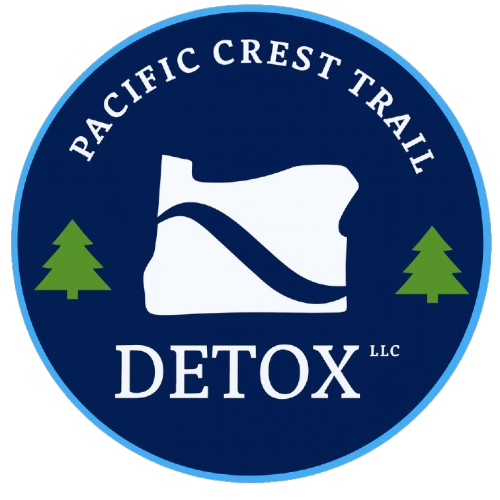While medical drug detox alone doesn’t resolve addiction, it establishes the stability needed for long-term recovery.
While both medical drug detox and social detox aim to help individuals withdraw from substances, they differ significantly in approach, safety measures, and effectiveness.
Medical drug detox is conducted in a healthcare setting where medical experts monitor an individual’s progress. This level of care is especially crucial for individuals experiencing severe withdrawal symptoms.
These programs may use medications to:
One of the key benefits of medical drug detox is its integration with long-term treatment planning.
Once an individual completes detox, they are encouraged to enter a structured rehabilitation program that addresses the psychological and behavioral aspects of addiction. This seamless transition significantly improves the chances of sustained recovery.
Social detox, however, often lacks a structured follow-up plan. Individuals may struggle to find appropriate treatment options without medical professionals guiding the next steps. This can lead to a higher risk of returning to substance use.
Withdrawal occurs when the body and brain attempt to adjust after prolonged substance use stops. Over time, drugs and alcohol alter the neurochemical balance, and once removed, the absence of these substances triggers a cascade of physical and psychological symptoms.
Here is an overview of typical withdrawal symptoms and how medications might be used to manage them:
In some cases, individuals may experience severe symptoms, such as:
Benzodiazepines reduce agitation, anxiety, and the risk of seizures by calming the nervous system. We carefully tailor the choice and dosage of these medications based on withdrawal severity and overall health.
These medications help stabilize the autonomic nervous system and reduce the risk of cardiovascular complications.
Common withdrawal effects include:
Some of the most common medication-assisted strategies that we may use for opioid withdrawal include:
Clonidine does not reduce cravings but significantly alleviates the discomfort associated with opioid withdrawal.
Common withdrawal effects include:
Due to the high risk of complications, benzodiazepine withdrawal is carefully managed using a structured tapering approach at PCTD.
Here is an overview of some of the strategies that we may utilize:
Abrupt discontinuation of benzodiazepines can lead to severe neurological instability. At PCTD, a gradual tapering approach is used to wean individuals off benzodiazepines safely.
Effective medical drug detox requires more than just medication—it demands a thoughtful, individualized approach based on a person’s health needs.
At PCTD, treatment plans are not predetermined but instead built around each client’s unique needs. While medication-assisted treatment plays a critical role in withdrawal management, it is only used when necessary and always as part of a comprehensive, personalized care plan.
Every treatment plan at PCTD begins with a thorough and structured evaluation process. This usually involves:
A tailored medical drug detox plan begins with a comprehensive evaluation of a client’s substance use.
Based on this evaluation, we determine whether a medication-assisted approach is necessary or if a holistic, supportive detox method is more suitable.
Mental well-being plays a vital role in the success of medical drug detox. Many individuals in detox also face underlying mental health concerns, such as:
A thorough mental health evaluation helps us assess emotional readiness for detox and customize therapy and counseling to enhance overall stability and recovery.
A person’s overall health plays a crucial role in how their body manages withdrawal. At PCTD, our medical team prioritizes safety and effectiveness by thoroughly assessing each client’s:
This comprehensive evaluation allows us to create a detox plan supporting physical stability and long-term recovery.
After conducting a detailed assessment, our medical team develops a detox plan that caters to the client’s unique medical and personal needs. This personalized approach enhances safety, reduces discomfort, and lays a strong foundation for recovery.
Detox is not a static process—it evolves as the client progresses. We conduct ongoing evaluations to ensure that withdrawal symptoms are managed effectively and that any emerging complications are addressed immediately.
If a client experiences heightened anxiety or agitation, adjustments may be made to provide short-term anxiolytic support or other therapeutic interventions. Medications may be tapered sooner if symptoms subside more quickly than anticipated to avoid unnecessary use.
At PCTD, group sessions offer clients a chance to connect with others facing similar challenges. This supportive environment fosters understanding and helps reduce feelings of shame and self-doubt.
Group therapy helps individuals gain new perspectives by learning from the successes and setbacks of others. Clients who are further along in medical drug detox serve as examples of resilience, inspiring those who are just beginning their journey.
This helps individuals push through discomfort and remain committed to their treatment plan.
Therapists guide participants through techniques designed to improve emotional well-being, including:
Through these discussions, individuals gain the tools to identify triggers, build resilience, and prepare for the next steps in their recovery journey.
Clients become more invested in their recovery by participating in group discussions and sharing personal goals. The group dynamic creates a sense of responsibility—not just to oneself but also to others. This mutual accountability can be particularly effective in maintaining motivation.
Leaving detox is just the beginning of the recovery process, as ongoing care is crucial for maintaining progress.
Here’s how PCTD supports individuals in taking the next steps toward lasting wellness:
Regular check-ins, recovery-focused events, and mentorship opportunities help individuals maintain motivation while fostering meaningful relationships.
Through ongoing care, individuals can build coping skills, develop healthier routines, and strengthen their commitment to sobriety.
A strong support system is essential for sustaining recovery. PCTD emphasizes the importance of community-driven healing by connecting individuals with support groups that align with their personal and philosophical recovery goals.
These connections help reinforce accountability and create a foundation for lasting sobriety.
The discomfort of withdrawal can make it difficult to stop using drugs, but a medical drug detox provides the support needed for a successful transition.
PCTD offers medical detox services with 24/7 medical monitoring to ensure safety and comfort. Our experienced team is here to help individuals take control of their health and confidently move forward.






